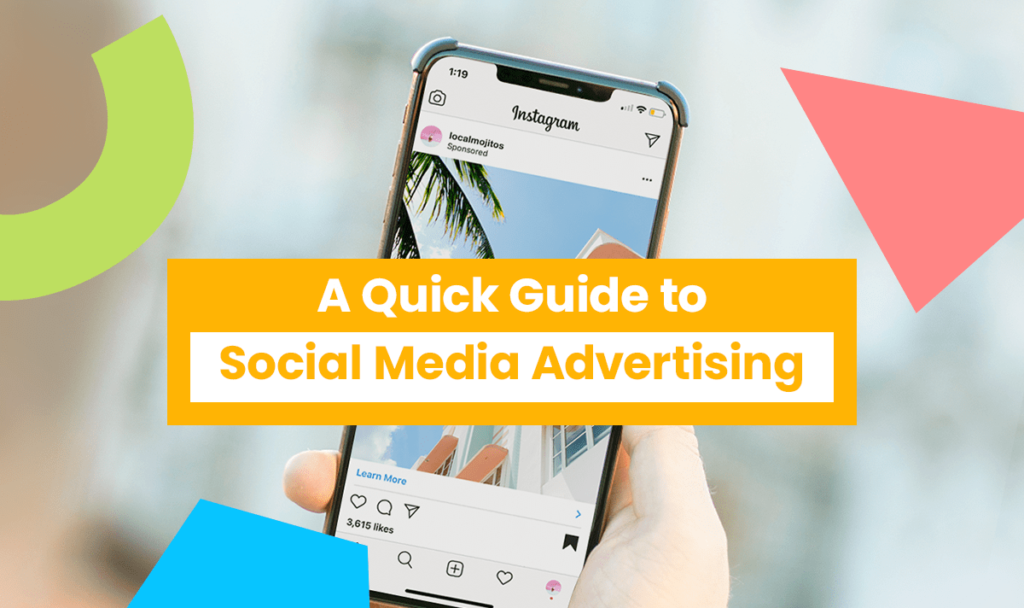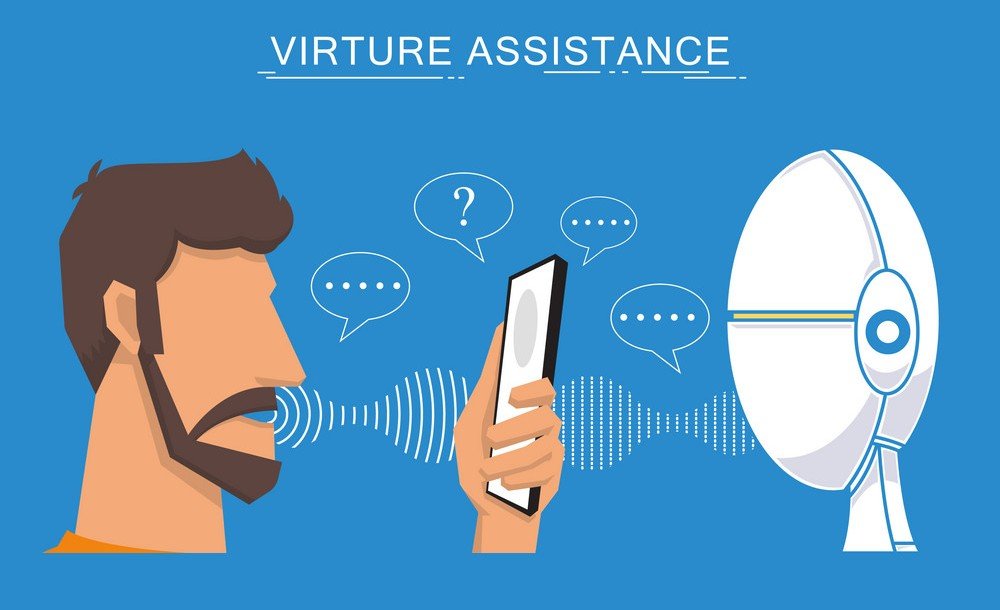Not only have our daily meetings shifted from the real to the online world, but also our shopping behaviors.
The post-pandemic period brought in a lot of changes in 2020, however, it seems like it was not satisfied with the havoc it already caused. Though the beginning of 2021 was smooth and scaringly silent, however, just in a couple of months, we realized that this was just the silence before the storm.

Lockdowns have become the new normal and with this, the buying behaviors of the customers have drastically changed. The majority of the consumers are shopping online, which means your customer is online. And as per the “Big Rule”, you need to be where your customers are. In short, customers have shifted online and so have the sellers and retailers.
According to a recent study, 45% of retailers plan to spend more on social media advertising in 2021 vs 2020. And this is the topic that I am going to discuss in this blog.
Not only do shoppers shop more frequently online, but they’re also more likely to start their buying journey on social media. Social platforms like Facebook and Instagram are common sources of brand discovery and this trend is likely to increase during and after 2021.
With new data showing retail spending on social media marketing is likely to increase in the coming year.
According to the recent survey of Smartly.io, a social advertising automation platform, 300 senior global marketing executives were asked about their current and future involvement in social media advertising. While social media has been a popular marketing tool for years, the acceleration of digital shopping has resulted in increased adoption of these platforms for advertising.
How Retailers Are Adapting To Changing Consumer Habits?
According to Kevin Dugan, VP of agency services at performance marketing agency DMi Partners, “Reaching shoppers on external platforms is critical because it’s your way to introduce them to your brand on their turf, rather than your turf. As someone is browsing Facebook, Instagram, Amazon, they are actively engaged with the content and if you meet them with the correct messaging and tone, it’s a powerful way to bring your products into their world.”
So you see, advertising on social media is a rather interesting way to not only approach your potential client but also engage with them and turn them into real customers. I am assuming that by now you are very much aware of the power of artificial intelligence. This technology can do wonders. Oh, don’t worry, you don’t have to use this technology (you can if you want) but here, I am just talking about where this technology is already being used. And by this, I mean the social media platforms.
I am sure you have shopped on Amazon, if you have ever noticed, while you are shopping or searching, the AI technology starts working on your buying patterns, what you have shopped, liked, added to your bucket list, etc. AI then analyses this pattern and based on that shows suggestions that you might be interested in or grab your attention, eventually leading you to either buy the product or add it to the list.
In short, you have to make it to these suggestions given by AI. In simpler words, you as a retailer should start advertising on these social media platforms and by using the right strategy and keywords, AI will start showing your ads to the right customers who will be interested in shopping what you are offering.
For example, if you are a retailer of ladies’ shoes, and you advertise on Facebook, Instagram, Amazon, etc, there are high chances that your ad will be shown to the users who have already bought shoes in the recent past.
Or probably searching for ladies’ shoes. So you see, it can work wonders for you if done with the right strategy. Oh, well, this is not about Amazon, it was just an example. Keep reading and the real hero will be revealed soon.
According to the poll conducted by Smartly.io, 74% of those surveyed have planned to spend at least a third of their marketing budget on social media advertising.
Respondents said they plan to increase their social media ad spend in 2021, with the bulk of their ad budget going to Facebook, followed by Twitter and then Instagram.
The survey included leading retailers from the US, UK, India, Australia, Indonesia, and Canada, with 34% responding from other locations.
Facebook Is Going To Lead
According to Smartly.io’s report, the majority of the companies spent between 31% and 50% of their entire ad budget on social media in 2021. Whereas the number was lower, it was between 20% to 50% in 2020. The report also revealed that the maximum of this budget was spent on Facebook. The numbers said

- 93% of the respondents were buying ads on Facebook. Other major platforms include Instagram, Twitter, LinkedIn, and TikTok.
- Instagram provided the best return on ad spend (ROAS) for 40% of respondents, up from 21% in 2019.
- About 25% of Asian organizations prioritized Instagram, and most of the rest prioritized Facebook and LinkedIn for their advertising budget.
- Although Instagram has a higher ROAS compared to other platforms, 76% of brands said they plan to increase their Facebook ad spend in 2021.
- This appears to be coming at the expense of other platforms, with around 40% of respondents indicating that they plan to increase their spending on Twitter, Instagram, and LinkedIn this year. Additionally, around 18-24% of brands plan to cut spending on the last three platforms.
Shift From Manual To Automation Ad Management
Managing ad posting, when to post which ad on which platform can be a real maze work. Manual ad management is a big challenge for businesses.
According to the numbers, 70-% of the respondents who participated in Smartly.io’s research, struggle with manually managing their social media ads. Some of the major challenges faced by them include:
- Difficulty creating original and well-differentiated content.
- Social media ads are closely scrutinized by consumers.
- Creating attractive, organic ads takes time.

While most respondents agreed that some manual administration is required to create engaging, unique, and personalized social media ads, most were ready to take the help of automation. 90% of respondents said they had not used automation technology to make it easier to develop and manage social media ads in 2020, but 81% said they were interested in automating social media ads. Smartly.io’s reports read, “Automating the creation and delivery of advertising content can reduce manual processes in the advertising process and save teams a lot of time.”
Why Shifting To Automation Social Media Advertising Is Beneficial
During the research, most respondents said they have optimized ad serving using proprietary or third-party data, but there is still work to be done in terms of creating more personalized ads at scale. Using the automation process, breaks creative silos, enabling better ad promotion.

While 71% of the participants believed their marketing and creative teams collaborate effectively at all stages of the marketing process,
the report found that a key trend for 2021 is an incentive for closer collaboration between advertising and marketing teams, eventually leading to better social media marketing and creative ad creation and promotion.
Smartly.io predicts, “By bringing these two teams together, retailers have the potential to generate social media ads that reach their customer segments on a personal level,
improving ROAS (Return On Ad Spend) and generating more opportunities to optimize social media as a channel.”
Some more numbers shared by the report include:
- 40% of poll participants plan to expand their marketing team to better manage social media advertising.
- 39% of poll participants plan to manage social media internally.
- 30% will invest in more robust advertising tools on social networks.
Social Media Advertisement Planning For 2021
2020 has moved much of the world online and consumers have moved quickly to digital channels as physical stores close. In response, marketing teams were forced to rethink advertising budgets and adopt omnichannel strategies.

To be successful, retailers will need to continually adapt their marketing to align with the ever-changing COVID-19 economy and the preferences of their consumers.
Social media will continue to play an important role in how shoppers discover, follow and buy their favorite brands. Some of the social media advertising strategies you should try in the 2021 area:
- Live broadcasts and more influencer content:
Stay-at-home requests meant events were canceled and consumers were forced to switch to online media.
This has led to an increase in the number of people accessing live broadcasts, whether it’s a live brand broadcast, a live video of a favorite celebrity, or an online workshop.
- Focus more on goodwill:
Consumers can’t connect with brands that they deem “shady” or insincere. Why would they want to invest in something that they cannot trust or that they cannot believe in? That’s why connection will be essential for brands that want to remain sources of trust in 2021 and the best way to stay connected and keep your customers engaged with your brand is to build and maintain your goodwill.
- Improved customer experience
Consumers yearn for pleasurable experiences with easy and memorable brands. They want proof before they buy and they want peace of mind, after all, no one wants to make the wrong decision.
Enhance your customer experience by showing them the best that they want to see and relate with. Keep a check, you don’t hit the emotional side while trying to connect, everyone has already lost their patience with emotions due to the pandemic.
- Inclusion is more important
The cultural shift towards inclusion is also having an impact on purchasing behavior, with 41% of shoppers abandoning retailers who do not reflect their perspective on identity and diversity and 29% are ready to change completely if they do not show enough diversity.
Brands that see themselves as non-inclusive, or that don’t seem to be part of the inclusion conversation, are likely to see impacts in 2021.
In contrast, brands that openly show their involvement in inclusive causes will reap the rewards and build deeper connections with the buyers.
- Enhanced voice and visual search
A growing number of consumers are searching through voice-activated tools like Alexa. This may be because this type of technology is more widely available. But it’s not just voice search that will prevail in 2021, we can also expect other creative search methods to reach the top, like visual search. Tools like Google Lens allow consumers to search for anything they can see. This means marketers will need to focus even more on alt text for images and sitemaps for images.

The new standards during and after the pandemic oblige all businesses to attach extreme importance to everything related to being active online. Social media is the most popular activity for people to do online and the most difficult for businesses.
Companies still see social media as a promotional and advertising channel rather than a great step to collaborate with social media users, primarily customers and influencers and get them to work through a relationship funnel to attract more customers.
I Hope, you will adopt these social media strategies and be a part of the 45% of retailers who plan to spend more on social media advertisements in 2021 vs 2020.





